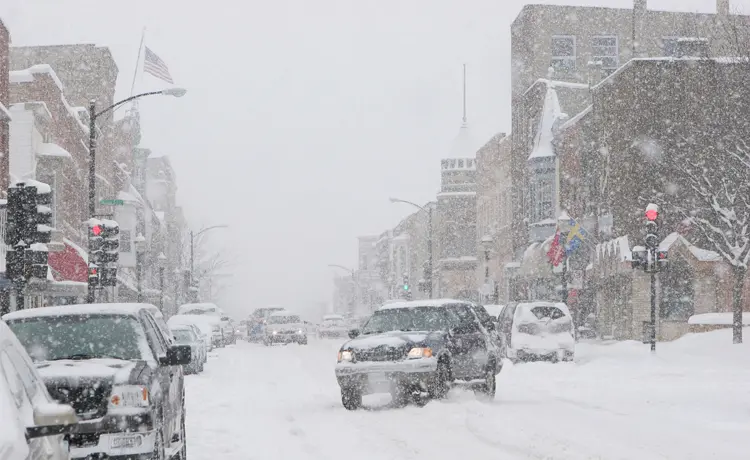Winter weather conditions can make driving treacherous, so arm the motorists in your community with vital information on how to prepare their vehicles for safe winter driving.
Prep Your Vehicle for Safe Winter Driving
-
Make sure your car is in good running order.
- Antifreeze level and quality
- Battery and ignition system
- Brakes
- Exhaust system
- Fuel and air filters
- Heater and defroster
- Lights and flashing hazard lights
- Oil
- Thermostat
- Windshield wiper equipment and washer fluid level
Make sure the windshield washer fluid is rated for cold temperatures.
-
Install winter tires.
You need winter tires on all four wheels for safe winter driving – the myth that they’re only necessary on the driving wheels is a dangerous one.All-season tires don’t grip cold roads as well as winter tires and aren’t as effective in deep snow.
- Winter tires only on the back wheels makes for unpredictable handling and in a sharp curve, if the front wheels don’t have any traction, the car will go off the road forward.
- Winter tires only on the front wheels can lead to a complete loss of control and in a sharp curve, if the rear wheels don’t have any traction, the car’s back end will come around and the car will go off the road backward.
-
Stock your car with winter necessities:
- Windshield scraper and long-handled snow brush
- Cold-weather windshield washer fluid
- Shovel
- Sand or tire traction mats
- Warm clothing and boots
- Blankets
- Flashlight
- Car cell phone charger
- Bottled water and non-perishable snacks
- Jumper cables
- Flares or reflective triangle
Keep your gas tank full during the winter season.
Safe Winter Driving Strategies
Check the National Weather Service’s winter weather forecasts or tune in to a NOAA Weather Radio to find out what’s headed your way. You can also call the state highway patrol for the latest road conditions. If it’s not safe to be on the road, stay home. But if you do find yourself stranded in your car, here’s what to do until help arrives.Some safe winter driving tips:
- Remove the snow and ice from the windshield, side and rear windows, mirrors and headlights so you can see properly. Clear off your taillights so you can be seen and don’t forget to clean off the roof.
- You may need as much as 10 times more distance to come to a complete stop on snow or ice than in warm and dry conditions. Always keep extra distance between you and the vehicle in front of you.
- Slow down and do everything smoothly, not abruptly: lane changes, accelerating, braking. Easing on the brakes helps to avoid locking the wheels and going into an uncontrollable slide.
- If you start sliding, do not oversteer; instead, look where you want to go and steer where you want the front of the vehicle to go. Take your foot off the accelerator and do not brake until you regain control of the vehicle.
Download some more safety tips for winter driving from the National Highway Traffic Administration. For more information on various preparedness and safety topics, browse the QuickSeries® library of guides, including Disaster Preparedness and Smart Driving for Service Members.The surfaces of bridges and overpasses freeze first and thaw last, so they may be more slippery.
